Last week’s Tuesday History post looked at newspaper coverage of the 1969 Asheville High School walkout. This week we share an account recently offered to Xpress by Roger Ball, who was the school’s student photographer that year. As Ball notes, Principal Clark Pennell asked him to capture the day’s events on his camera.
Ball writes:
On the morning of [September] 29th, I was surprised to have Principal Pennell stop by my homeroom before classes and pull me aside. He expected a walkout of students later that morning and asked me to grab my camera. He wanted me to take photos of any cars coming on campus that didn’t belong to students. He felt that there were some outside people pushing this walkout and he wanted evidence.
As a young 18-year-old high school senior and the school photographer, I was pretty excited to help out at that point. Though I soon started wondering exactly what I was getting into as I came across uniformed Asheville police lined up in the lower level hallway, wooden nightsticks attached to their belts.
Once the morning bell sounded for first period it was obvious that the majority of the black students were heading to the front of the school instead of class. I followed and started taking photos of the students and watched for any cars driving up to the entrance. I never saw any. Outside, several students took the lead and addressed all who had walked out. Arms were raised in black power salutes.
Eventually Principal Pennell came out to try and defuse the situation. He asked the students to return to class. Nothing came from his efforts and the next thing I noticed were the police filing out the front. The students quickly moved off the front steps, across the front driveway and onto the grass area. At this point, the police demanded the students leave the campus. I don’t think returning to class was an option.
Lined up shoulder to shoulder, the police approached the crowd of students and when they did not disperse, wooded batons came out and the officers started swinging. To be honest, I was so shocked seeing the situation escalate this far, I forgot to to keep taking photos and only started taking them again when the students bolted in different directions down the schoolyard toward McDowell Street.
I continued to take photos as the students started throwing rocks at the police and watched as a small VW Bug was turned over. Eventually the largest group of students moved away, most of the police left or moved to different places around the school, I couldn’t tell. Classes were called off and the rest of the school’s students went home.
While the school stayed closed for a couple of weeks, I spent many days in the school’s darkroom making multiple 8-by-10 glosses of every shot I took that morning. Copies for the SBI, FBI, police, school board, you name it.
I did keep the negatives and, 40 years later, pulled the badly curled strips of film out. I cleaned, flattened and scanned each frame, posting them to several Facebook groups that popped up looking back at that day in our lives.
That was my involvement in the walkout.
From a more personal point of view, I’ve always thought the walkout was justified. I didn’t agree with the damage done to personal property and [I was] glad things didn’t escalate to the point anyone was seriously injured for sure. But what did the Asheville School Board and those handling the 1969 integration of the all-black high school, Stephens-Lee and the mostly white Lee Edwards, think? Hardly a year after one of the most violent and sad periods in our country — with the deaths of Martin Luther King and Bobbie Kennedy and racial riots in major cities — [the Asheville School Board] seemingly spent little time thinking hard about how this forced integration would affect the students involved.
There were several instances earlier in the school year where punishment for minor infractions was disproportionately levied on black students versus white students. Weeks before this walkout, it was brought to the school’s attention that none of the many Stephens-Lee sports trophies were on display in the large glass case at Asheville High. Both schools had a long and proud history of sports and awards to prove it. Yet I don’t believe a single Stephens-Lee trophy was displayed. Add the ongoing racial unrest nationally and things just reached a boiling point that day.
Ball’s fellow classmate and Asheville resident Dan Lewis is in the process of putting together a video documentary about the events. For information regarding the documentary, please visit avl.mx/40o.


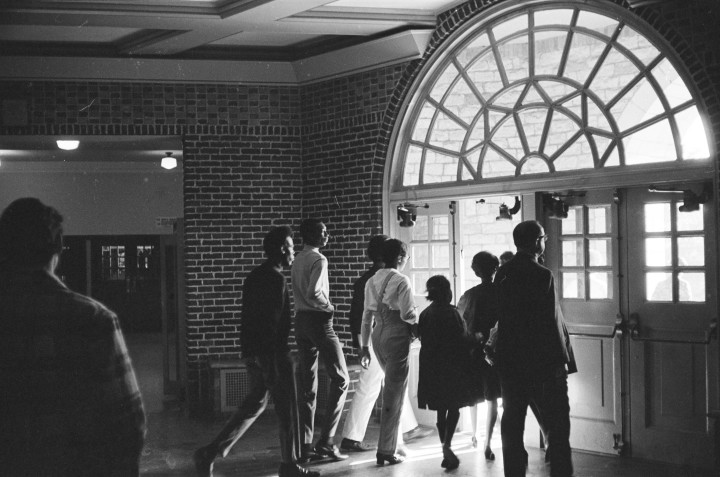
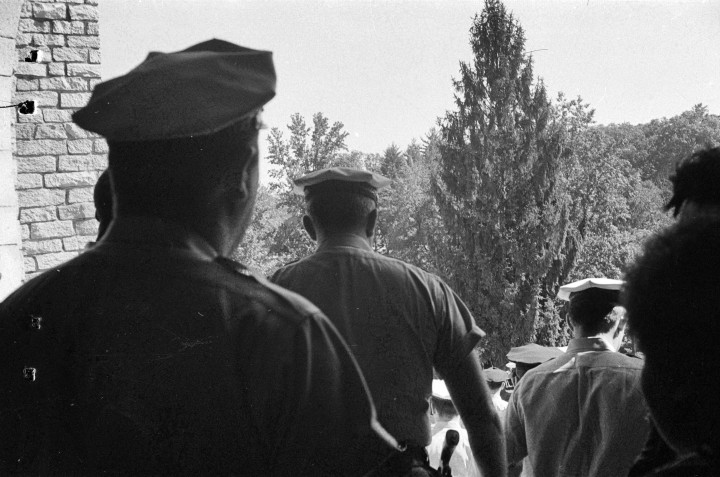
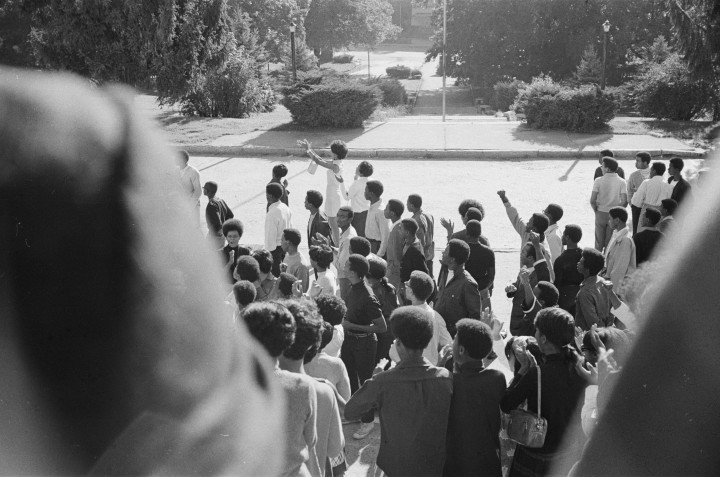

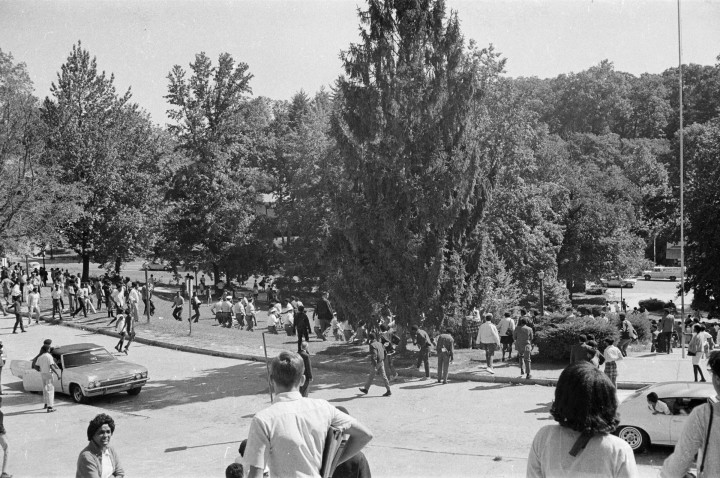
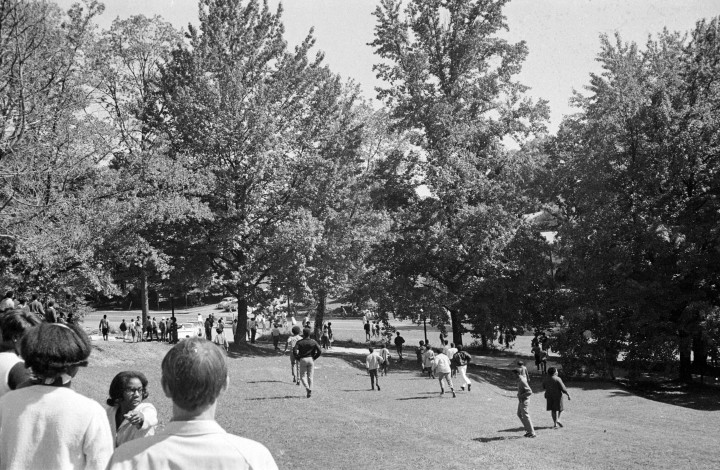
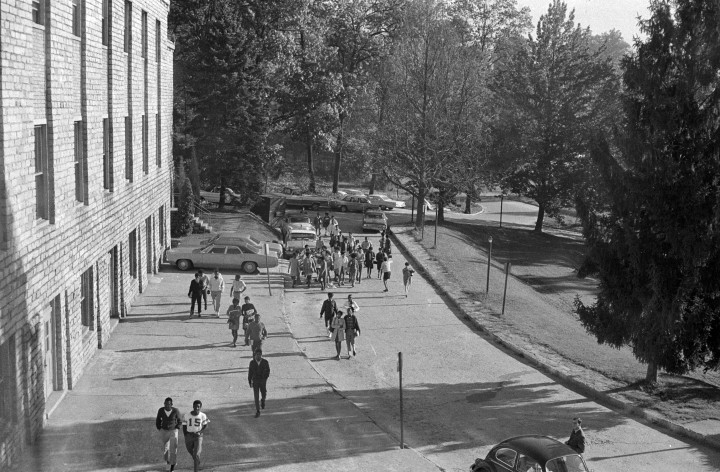

These students had plenty to be concerned about and organized a peaceful way to protest about their situation. Maybe the most shameful thing about all protests by people of color is that it is 2017 and they are STILL having to push for equal treatment under the law and respect.
I have been with my husband as he and friends remember those times. Some of them don’t like to remember or even bring the subject up. Sometimes I think it is a fear of starting, again, some of the bad about this day and moments in time. I would like to see people remember that day of the horrid injustice and racism. He doesn’t believe this was a story of one person or even a group. Some people were involved for the cause and chance to change the bad attitudes of both black and white. A dark cloud is hovering over our Nation right now with talks of war and of racist hatred reaccuring. The clan is appearing in cities now, and the police (some of them) are killing blacks out of what? Is it fear or has that horrible hatred from different sides being encouraged by some on the higher echelons of our courntry. I CAN ONLY SAY PRAY TO YOUR GOD AND HAVE HOPE THAT THE ALL MIGHTY IS LOOKING OUT US.
Thank you for sharing this history. I hope the video will come out soon.
My Mom (an immigrant from the Philippines) started teaching English at Asheville high one year after the walkout. I wonder what she would have thought had she been there in ’69.
Phil Marsosudiro – I had a teacher named Mrs. Marsosudiro at Asheville High – probably in 1972. Are you related? I’ve wondered how she and other teachers experienced those days and whether she has shared her memories…..
My father was Assistant Principal Dean of Boys when this happened